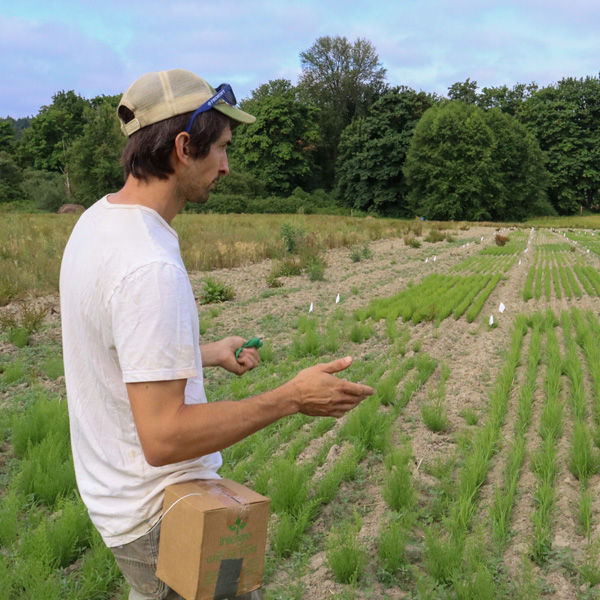Dry farming: A bounty of sweet fruit, no irrigation necessary
By Olivia Leader, Marketing & Communications Coordinator.
One perfectly warm summer afternoon, I noticed a change in the tomato fields as farmers Riley and Anthony trellised tomatoes. I inquired about what they were working on, and as I picked and prodded, they mentioned “dry farming”.
Intrigued, by this unfamiliar term, I delved in and found that they weren’t watering the tomatoes at all. Concerned, by this intense technique I embarked on months of questioning, harvesting, and taste testing. In a conversation with Agriculture Program Manager Anthony Reyes, I gained insights into the pivotal growing season and demystified the nuances of dry farming.
I’m excited to be sharing what I’ve learned so far:
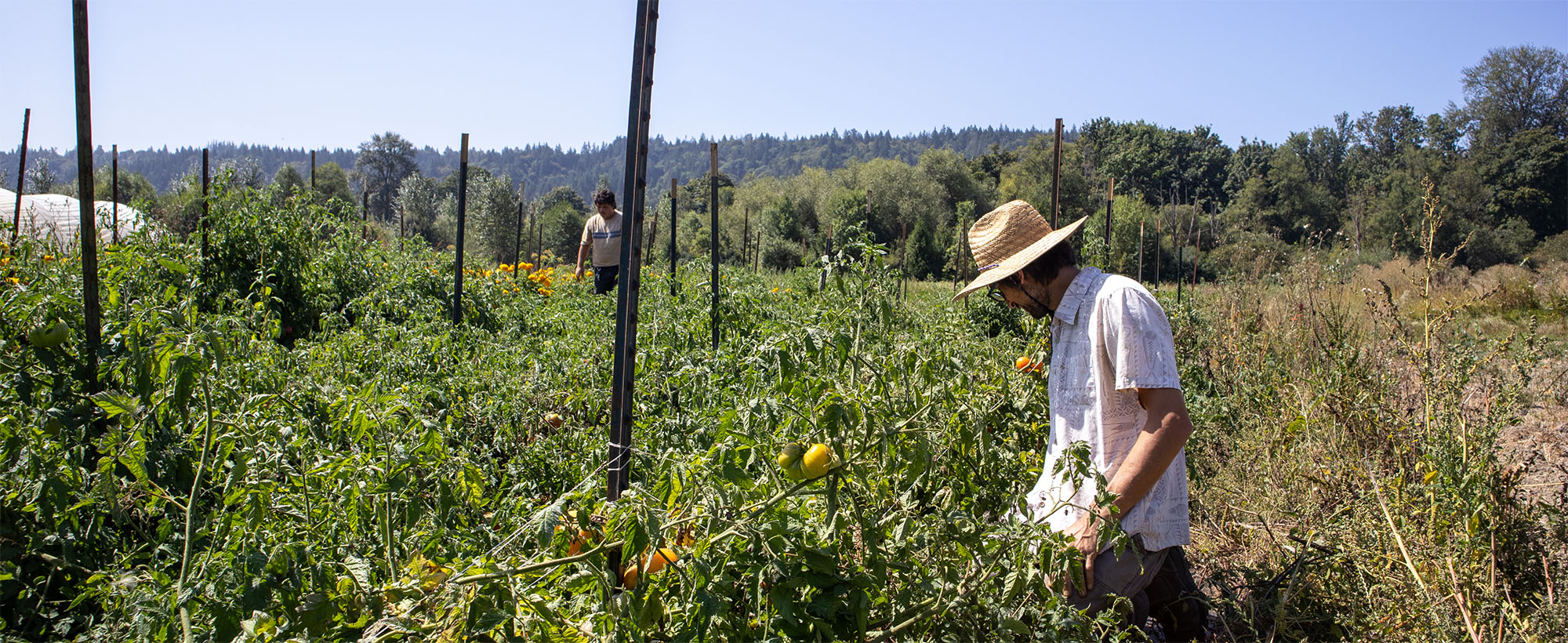
Parched and stressed make for sweeter treats.
Traditional tomato production requires approximately 1 inch of water per week (around 27,000 gallons for a single acre of fresh water, just for tomatoes!). These red juicy fruits have a reputation for being one of the most water-hungry crops, but they sure are delectable.
This year at Oxbow the Agriculture Team decided to shake things up and not irrigate the slicing tomatoes or winter squash at all. This process is called dry farming, and it is one of the leading solutions to reducing water consumption for agriculture and producing concentrated and more delicious fruit.
Coddled germination followed by tough-luck parenting
Dry farming is a term that encompasses a set of growing and management techniques for cultivating crops without irrigation. It is only viable in regions that experience seasonal droughts, receiving less than 20 centimeters of rainfall during summer, more rainfall would be considered rain-fed irrigation. The premise of dry farming is built upon creating a controlled yet highly stressful environment for plants by not watering them, forcing crops to rely on the soil’s natural moisture reserves.
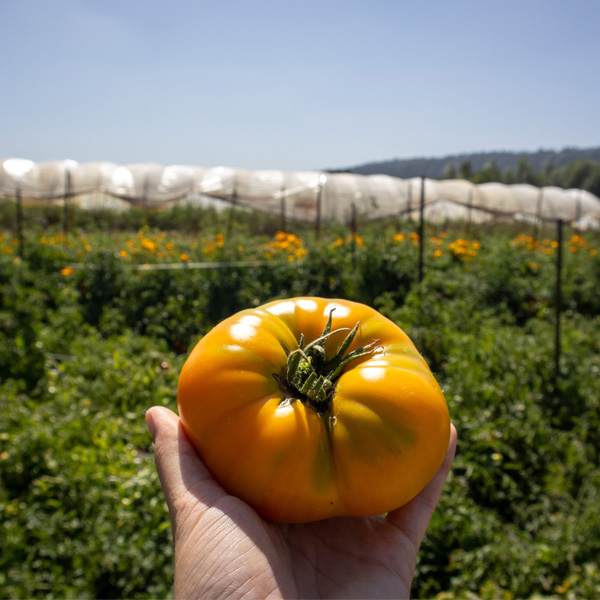
Before going in the ground, we propagate them in the greenhouse just like any other transplant, “Then we’ll monitor them until they’re tall enough and healthy enough and they have that well-established root system. Then, before planting, we’ll soak them in fish fertilizer and fertigate them. Lastly, we dig a deep hole and throw them in the ground.”
This year was Oxbow’s first time trying this growing practice, we started with our slicer tomatoes and winter squash. Our tomatoes responded well; we’ve never had a better tomato year! Our crew brought in over 200 pounds between the Early Girl and Heirloom varieties in one week. Dry farming our tomatoes alone saved nearly 900,000 gallons of water from the Snoqualmie River this year. Our winter squash production was also fruitful, but the results were less dramatic than in previous years with traditional irrigation cadence.
Setting up for success dry farming
Although trying something new always comes with some amount of risk, there are variables that can help increase the odds of positive results. At Oxbow we integrate conservation practices like crop rotating and cover cropping and being situated in a flood plain with clay rich soil.
Cover crops
Soil that has been cover cropped will contribute more organic matter, allowing the soil to absorb and retain more moisture, resulting in greater drought resilience. If you were lucky enough to visit Oxbow in September, you likely saw the fields brimming with golden sunflowers. The primary purpose of cover crops is to improve soil health. We’re experimenting with various combinations, but some plants you’ll see are sunflowers, fava beans, rye, and clover. Some add nitrogen, suppress weeds, add biomass and reduce soil erosion. Each crop offers something slightly different like, sunflowers being enormous contributors to biomass and fava beans fixing nitrogen through their roots nodules.
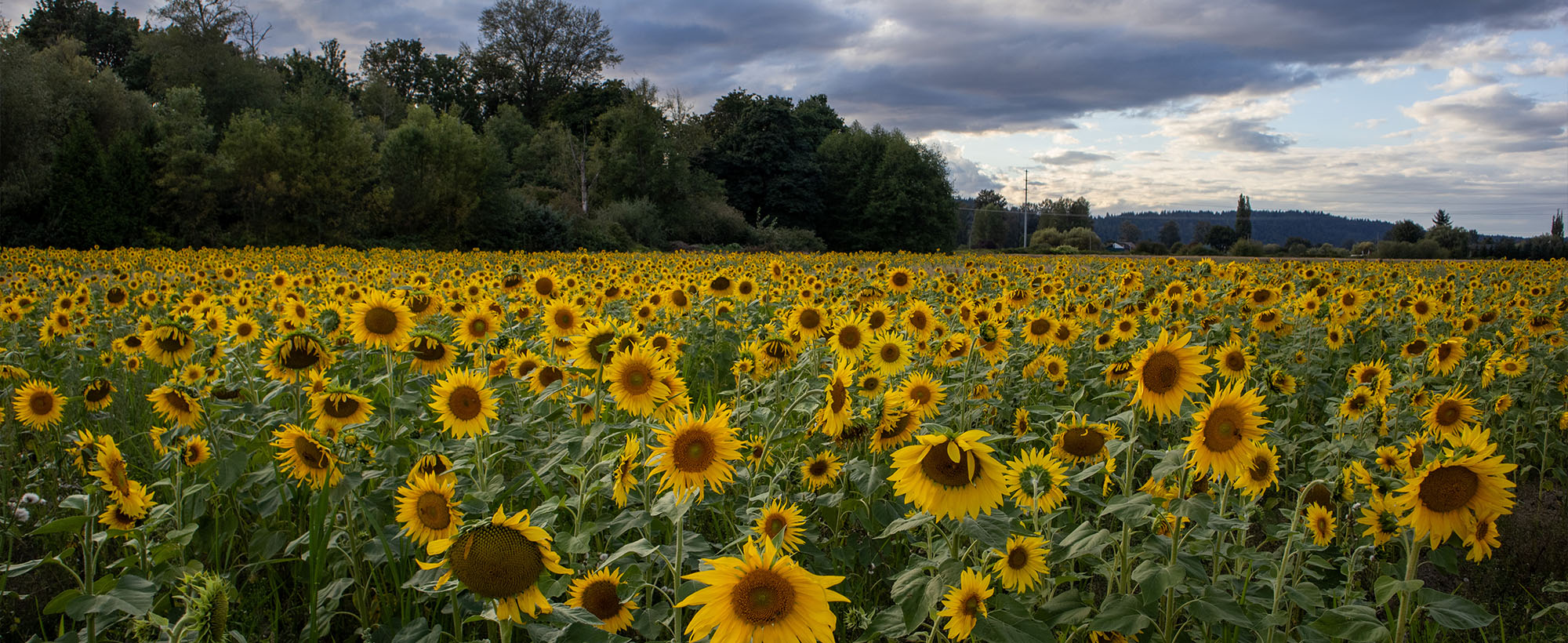
Location
Nestled in a low-lying river valley, Oxbow experiences seasonal flooding from November through April annually, enriching our soil with increased clay content. This natural occurrence not only enhances water and fertilizer retention but, through our commitment to sustainable agriculture and the use of riparian buffers, also contributes to the improvement of local land and waterways, reduces soil erosion, and harnesses the inherent benefits of the valley’s conditions. Learn more about farming in a floodplain here.
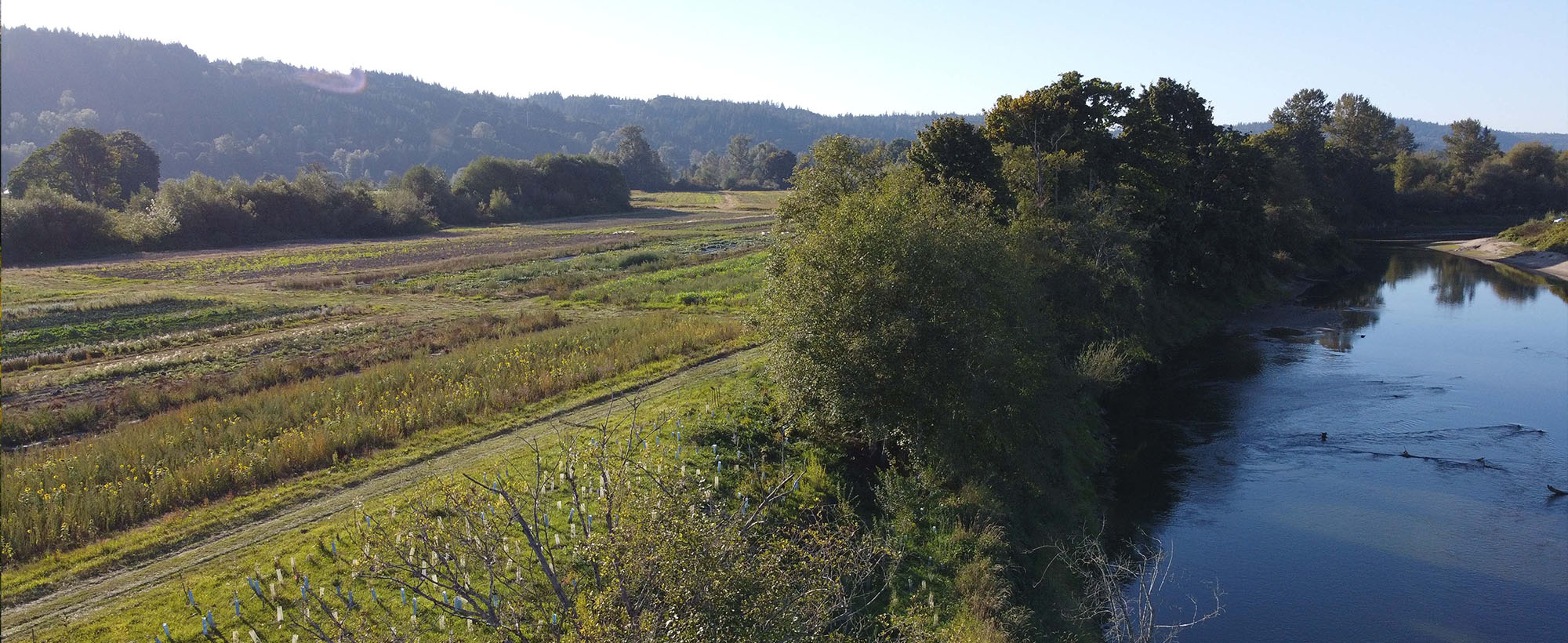
Hurdles to turning off the spigot
Dry farming has yet to be popularized, but it is on the rise, especially as more experimentation is being done and folks can learn from one another’s successes and challenges. Educating more people on the growing and purchasing sides is essential for expanding the demand and presence of dry-farmed produce. Our team had their own trepidations,
“I know how much of a difference consistent watering can make in terms of the health of the plants and I was a bit worried about thirsty plants being more prone to disease and insect pressure. But it seemed like once the plants found their feet and got established, those fears didn’t come to pass.” – Josh Sturdevant, Agriculture Production Assistant Manager
Not only is it daunting to try something new, but it is also a financial risk with many factors. Since the technique is not widely recognized, there needs to be a more well-developed market or demand calling specifically for it. Once people learn that smaller fruits do not mean smaller flavor, and more dry-farmed crops are available, saving water and providing scrumptious alternatives will reduce these barriers, learnings will percolate, and dry farming will become more widespread.
Beyond water savings
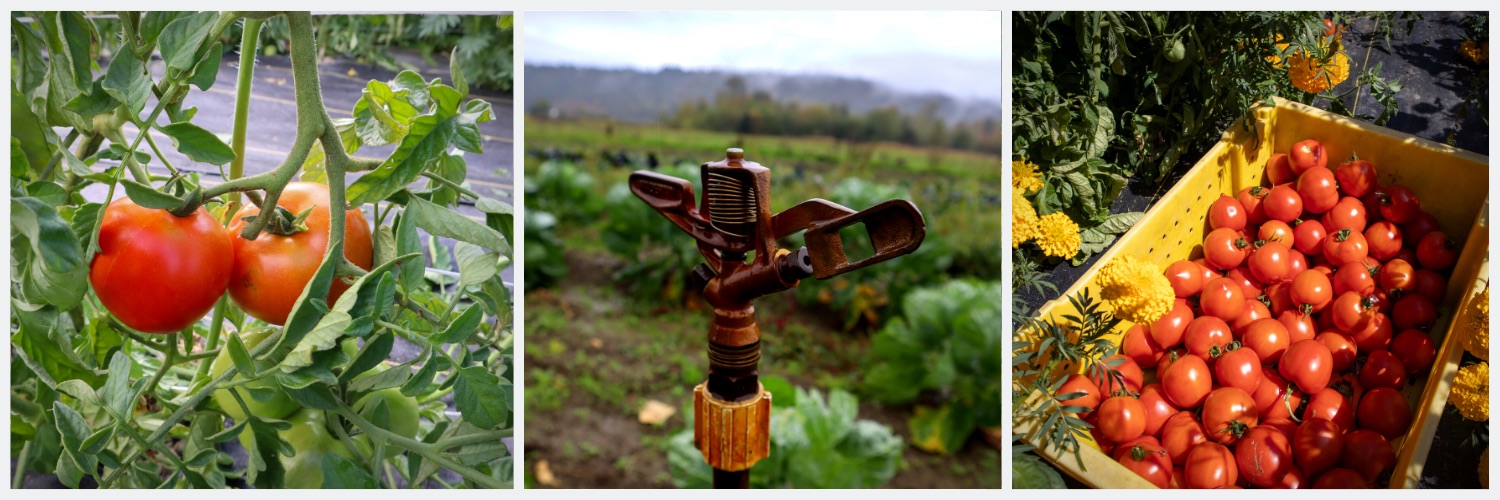
Not only do dry-farmed crops save tons of water, but they also reduce labor needs (no need for irrigating and less weeding!). Due to the nature of creating stressful environments for the plants by withholding water, they focus more of their energy into fruiting, resulting in smaller but more concentrated and more flavorful produce.
In summary, dry farming is an incredible tool but it is not for everyone whether it’s due to financial risk, region, or production goals. It works because it forces plants to grow deeper roots and access nutrients and moisture further down in the soil. It’s an exciting practice to gain experience with and learn what works specifically for us and what doesn’t.
What’s in store?
After having this growing season full of “firsts,” I connected with Anthony to learn about his reflections and what they’re expecting next year to look like. In his own words,
“Next year, specifically with the dry farm tomatoes, they were such a resounding success that we’re looking to continue some of the dry farm tomato varieties but be a lot more intentional with our variety selection. We’d like to work with a seed producer in California that specifically produces hybrid heirloom varieties for dry farm production. We’re also hoping to expand our dry farm offerings. We want to experiment with some dry farm melon varieties and one variety of dry farm zucchini summer squash. Then be more intentional with our winter squash production for dry-farm conditions.”
In the image above Anthony Reyes is seen discussing their cover crop trials work at Oxbow.
We’re looking forward to continuing to share the fruits of our labor, experiment, and grow while bridging the demands for feeding our community with environmental, social, and economic welfare and spreading our learnings along the way.


